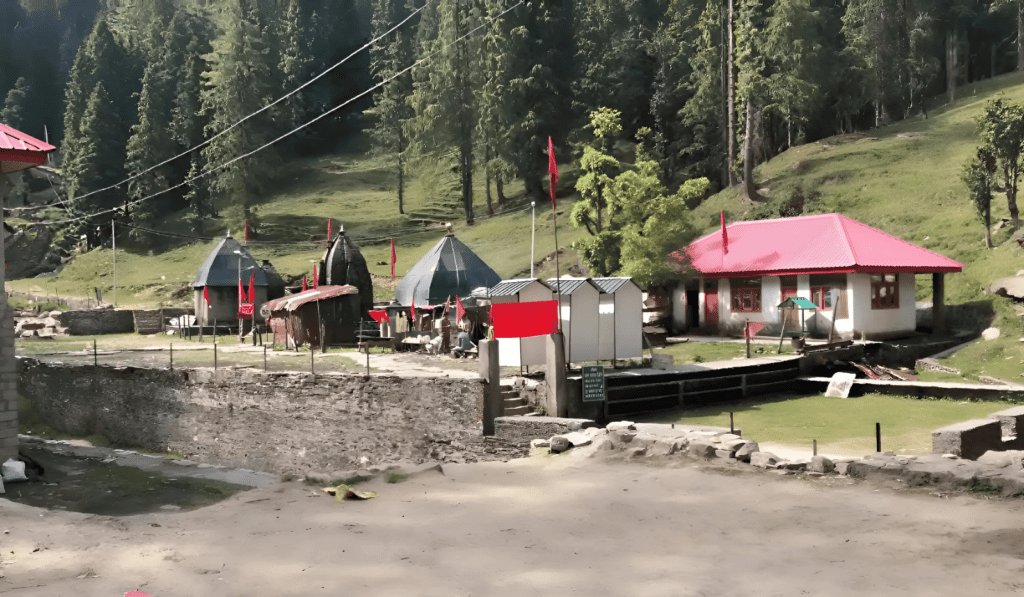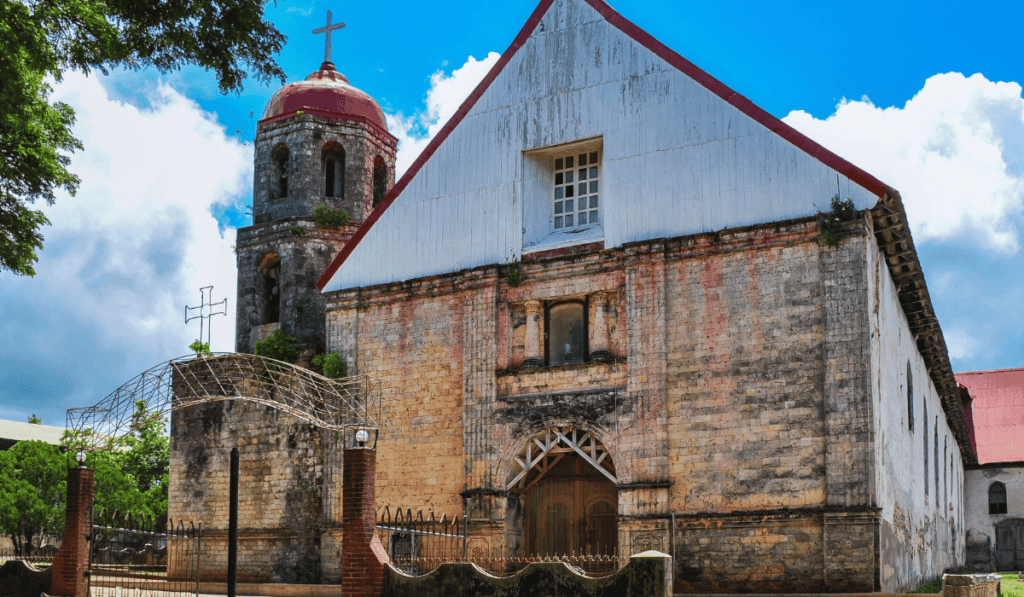
Lazi Church, formally known as the San Isidro Labrador Parish Church, is a stunning example of the rich history and culture found in Siquijor, Philippines. Nestled in the heart of Lazi, this church is not only a place of worship but also a significant historical landmark that reflects the architectural brilliance of the Spanish colonial period. This comprehensive guide will explore the church’s historical background, architectural features, cultural significance, and practical information for visitors, providing a well-rounded understanding of this remarkable site.
Historical Background
The Establishment of Lazi Church
The roots of Lazi Church trace back to the mid-19th century when the municipality of Lazi was established as a parish on August 8, 1857. The Augustinian Recollects, a Catholic religious order, played a pivotal role in its founding. Under the leadership of Father Toribio Sánchez, the church’s construction began in 1884 and was completed in 1891. This period was marked by significant religious and cultural developments in the Philippines, as the country was under Spanish colonial rule.
The church’s establishment was a reflection of the growing Catholic faith in the region, which was intertwined with the local community’s identity. Lazi Church became a focal point for religious activities, serving not only as a place for worship but also as a community gathering space.
Historical Significance
Lazi Church has witnessed numerous historical events, including the Philippine Revolution against Spanish rule and the subsequent American colonization. The church served as a refuge for locals during times of conflict, reinforcing its role as a sanctuary for the community.
In recognition of its historical and cultural importance, Lazi Church was declared a National Historical Landmark in 1984. It was further recognized as a National Cultural Treasure by the National Museum of the Philippines in 2001. These designations highlight the church’s significance in the broader context of Philippine history and its role in preserving the cultural heritage of Siquijor.
Architectural Features
Lazi Church is celebrated for its unique architectural style, which combines elements of Baroque and Neoclassical design. The church’s construction is characterized by the use of local materials and traditional building techniques, resulting in a structure that is both beautiful and functional.
Exterior Design
- Cruciform Layout: The church is designed in a cruciform shape, symbolizing the cross and reflecting its religious significance. This layout is common in Christian church architecture and enhances the spiritual ambiance of the space.
- Imposing Façade: The façade of Lazi Church is striking, featuring a grand entrance adorned with intricate carvings and a large bell tower. The bell tower, which houses several bells, serves as a focal point for the church and the surrounding community. Its height and design make it a prominent feature in the landscape.
- Coral Stone Construction: The church is primarily constructed from coral stones and wood, sourced locally. The use of coral stones not only adds to its aesthetic appeal but also provides durability against the elements. The coral stone blocks are arranged in a way that showcases the craftsmanship of the builders.
Interior Design
- Retablo: Inside, the church boasts a beautifully crafted retablo (altarpiece) that showcases intricate religious imagery. The retablo is a focal point of the church, depicting various saints and biblical scenes, and serves as a visual representation of the Catholic faith.
- Wooden Flooring and Ceiling: The wooden flooring and ceiling beams exhibit the craftsmanship of the period, with detailed carvings and designs that reflect the artistry of local artisans. The warm tones of the wood create a welcoming atmosphere for worshippers and visitors alike.
- Stained Glass Windows: The stained glass windows allow natural light to illuminate the interior, creating a serene and contemplative environment. These windows often depict scenes from the Bible and are an essential aspect of the church’s artistic expression.
The Convent
The adjoining convent is one of the largest in the Philippines, measuring 42 meters by 38 meters. It features a U-shaped design and is constructed from coral stone and hardwood. The convent serves as a residence for the parish priest and other clergy members, as well as a space for community activities.
Today, the convent houses the Siquijor Heritage Museum, which displays various artifacts, including religious relics, historical documents, and local crafts. The museum provides visitors with a deeper understanding of the region’s cultural heritage and the role of the church in the community.
Cultural Significance
Lazi Church is more than just a building; it is a vital part of the local community’s identity. It serves as a center for religious activities, community gatherings, and cultural celebrations. The church plays a crucial role in the spiritual life of the residents, hosting regular masses, weddings, and other religious ceremonies.
Community Engagement
The church is a hub for community engagement, where locals come together to celebrate important religious events and cultural festivals. The church’s calendar is filled with activities that foster a sense of belonging and unity among the residents.
One of the most significant events is the Feast of San Isidro Labrador, celebrated every May 15. This event draws locals and tourists alike, showcasing traditional music, dance, and food. The feast honors the patron saint of farmers and serves as a reminder of the agricultural roots of the community. During this time, the church is adorned with flowers, and the atmosphere is filled with joy and festivity.
Preservation of Traditions
Lazi Church also plays a crucial role in preserving local traditions and customs. The church is a site for various cultural practices, including rituals and ceremonies that have been passed down through generations. These traditions are integral to the community’s identity and are often intertwined with the church’s religious practices.
where is located lazi church
Lazi Church, officially known as the San Isidro Labrador Parish Church, is located in the municipality of Lazi, Siquijor, Philippines. It is situated in the southern part of Siquijor island, approximately 32 kilometers from the provincial capital of Siquijor. The church is easily accessible by road, with public transportation options like buses, vans, and tricycles available from various parts of the island.
How to Get to Lazi Church
Lazi Church, also known as San Isidro Labrador Parish Church, is located in Lazi, Siquijor. Here’s a step-by-step guide on how to reach this historic destination:
1. Getting to Siquijor Island
By Air:
- From Manila or Cebu: Fly into Dumaguete City Airport (DGT) on Negros Oriental. Several airlines offer flights from Manila and Cebu to Dumaguete. From Dumaguete, you can take a ferry to Siquijor Island.
By Sea:
- From Cebu City: There are direct ferries from Cebu City to Siquijor operated by companies like OceanJet and Montenegro Lines. The trip usually takes around 1.5 to 2 hours.
- From Dumaguete City: Ferries from Dumaguete to Siquijor are frequent and take about 1 hour. Companies like OceanJet and other local operators provide this service.
2. From Siquijor Port to Lazi Church
By Tricycle:
- From the Port: Upon arriving at Siquijor’s port (either in Siquijor town or Larena), you can take a tricycle, which is a common mode of transport on the island. The ride to Lazi Church will take approximately 30 to 45 minutes, depending on traffic and road conditions.
By Scooter or Motorbike Rental:
- Renting a Scooter: For more flexibility, consider renting a scooter or motorbike. Siquijor has several rental shops, and driving yourself allows you to explore the island at your own pace. Lazi Church is well-marked, and a GPS or map will help you find it easily.
By Car Rental:
- Car Rental Services: If you prefer more comfort and space, you can rent a car. Several rental agencies in Siquijor offer this service. The drive to Lazi Church is straightforward, and road signs will guide you.
3. Directions to Lazi Church
- From Siquijor Town: Head south on the national road. Follow signs to Lazi. Lazi Church is located in the town center, so it’s easy to spot once you reach Lazi.
- From Larena Port: Take the road south toward Siquijor town and then follow the signs to Lazi. The drive offers scenic views and is a pleasant journey.
4. Local Tips
- Check Ferry Schedules: Ferries between Dumaguete and Siquijor may have different schedules, so it’s a good idea to check ahead and book tickets if necessary.
- Bring Cash: While ATMs are available, it’s wise to carry some cash, especially if you’re planning to use local transportation or make small purchases.
- Ask for Directions: If you’re unsure of the way, don’t hesitate to ask locals for directions. Siquijor is known for its friendly residents who are happy to help.
Best Time to Visit Lazi Church
The best time to visit Lazi Church is during the dry season, from November to April, when the weather is pleasant for sightseeing. Early mornings or late afternoons are ideal for avoiding the heat and enjoying the tranquil atmosphere. Visiting during religious events or festivals can provide a unique insight into the local culture and traditions.
Photography Etiquette
The stunning architecture and picturesque surroundings make Lazi Church a perfect spot for photography. Visitors are encouraged to capture the beauty of the church and its surroundings; however, it is essential to be respectful of the sacred space. When taking photos during services or religious events, it is advisable to keep noise to a minimum and avoid using flash.
Nearby Attractions to Lazi Church
Lazi Church, with its rich history and stunning architecture, is a central attraction on Siquijor Island. Fortunately, it’s also surrounded by several other noteworthy destinations that you can explore. Here are some must-visit spots near Lazi Church, including their distances and highlights:
Cambugahay Falls

Distance: 3 km (10-minute drive)
Highlights: Cambugahay Falls is renowned for its picturesque setting and clear blue waters. Enjoy swimming in the natural pools, swinging from ropes into the refreshing water, or simply relaxing amidst the lush surroundings. If you want to know complete information about Cambugahay Falls, click here
Century-Old Balete Tree

Distance: 10 km (20-minute drive)
Highlights: This massive, 400-year-old balete tree is a local landmark. At its base, you’ll find a natural spring where you can enjoy a unique fish spa experience as tiny fish nibble at your feet.
Salagdoong Beach
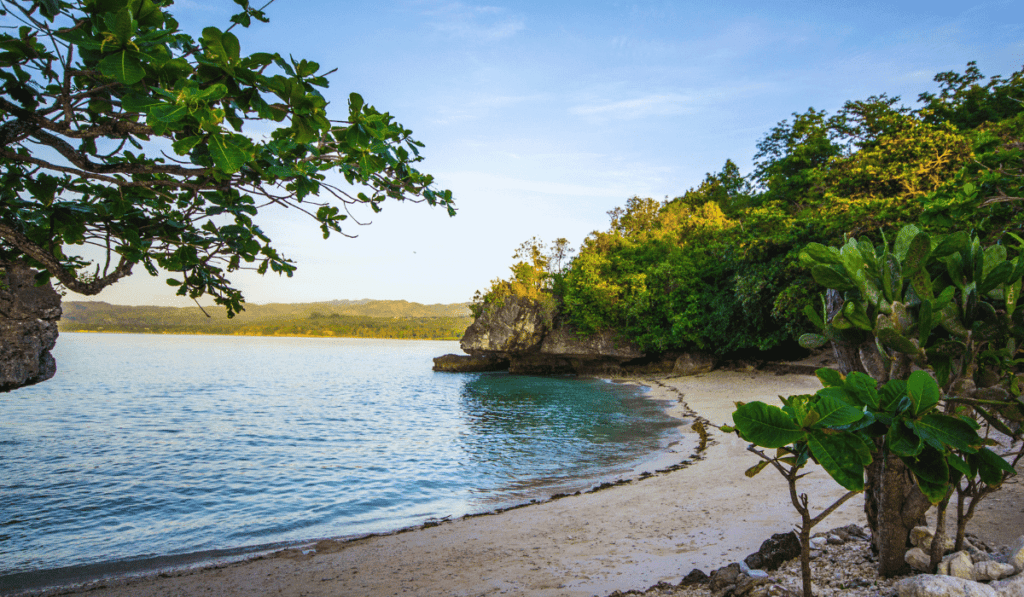
Distance: 14 km (30-minute drive)
Highlights: Known for its stunning blue waters and rocky cliffs, Salagdoong Beach is a great spot for swimming, snorkeling, and cliff diving. Its clear waters and vibrant marine life make it a favorite among visitors.
Paliton Beach
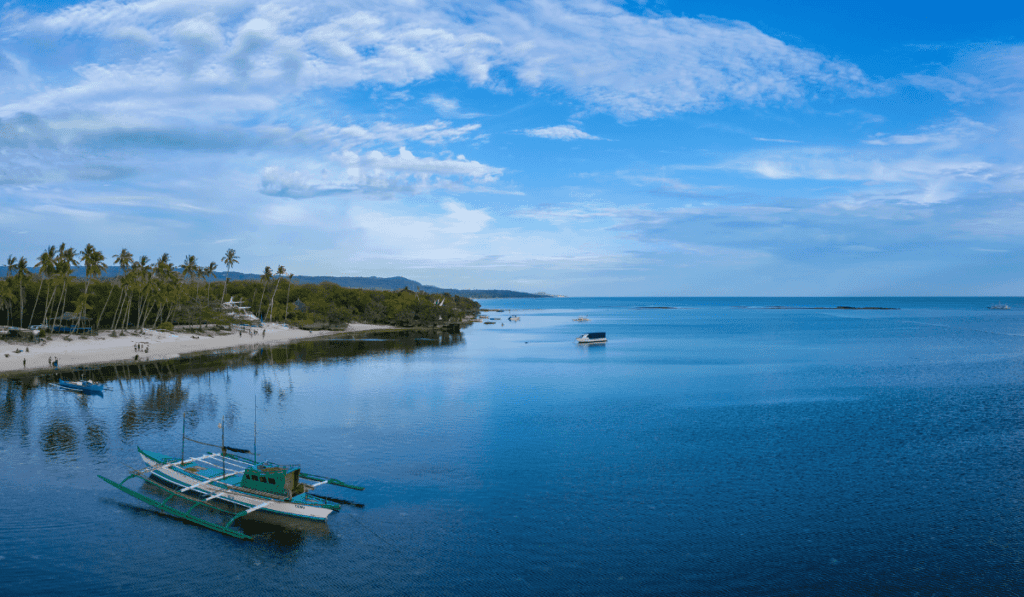
Distance: 20 km (40-minute drive)
Highlights: A quieter, less crowded beach with pristine white sand and crystal-clear waters. Paliton Beach is ideal for a peaceful day out, sunbathing, and enjoying beautiful sunsets.
- Mount Bandilaan Nature Park
Mount Bandilaan Nature Park
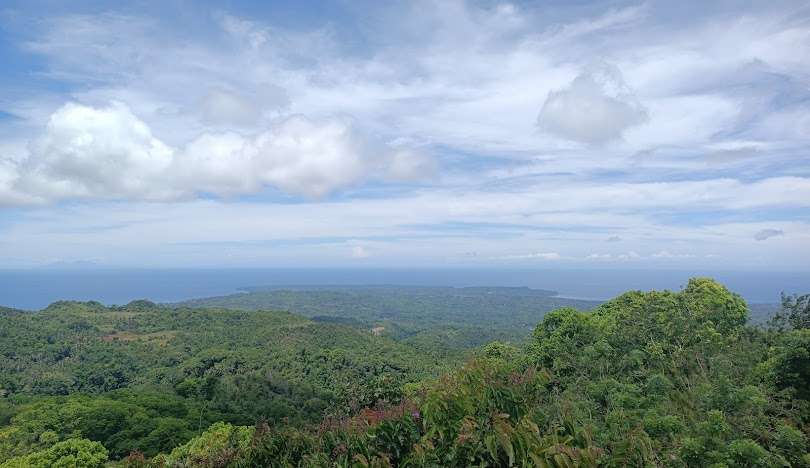
Distance: 8 km (15-minute drive)
Highlights: The highest point on Siquijor, this park offers hiking trails, panoramic views of the island, and a butterfly sanctuary. It’s perfect for nature enthusiasts and those looking for a bit of adventure.
- Siquijor Butterfly Sanctuary
Siquijor Butterfly Sanctuary

Distance: 11 km (25-minute drive)
Highlights: This sanctuary is home to various butterfly species and offers educational displays on their life cycles. It’s a delightful spot for those interested in local wildlife and conservation efforts.
Kagusuan Beach
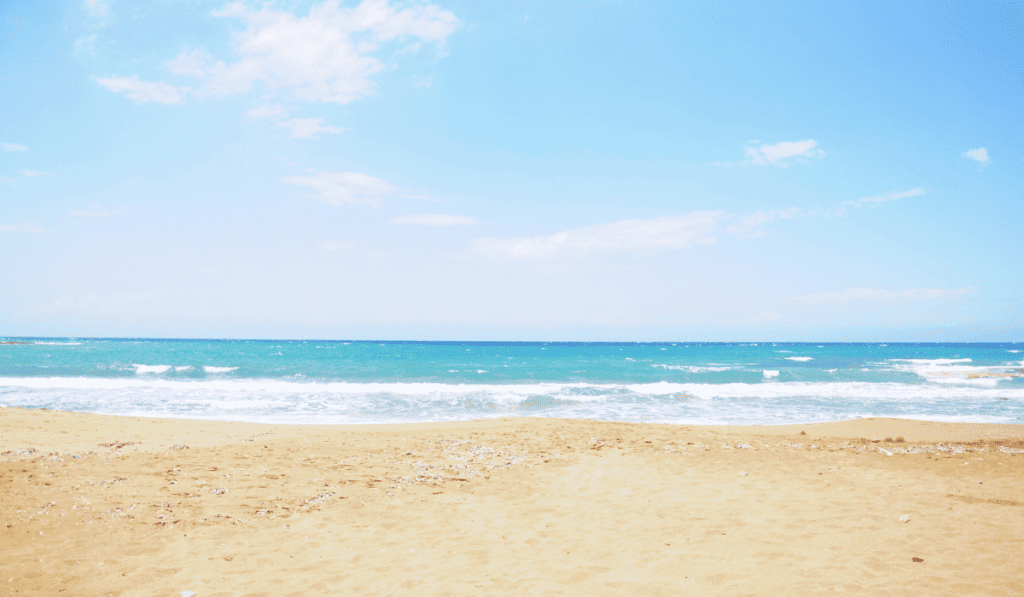
Distance: 13 km (30-minute drive)
Highlights: A serene and less frequented beach with white sand and clear waters. Kagusuan Beach is great for a quiet escape from the more popular tourist spots, offering a peaceful environment for relaxation.
These attractions, all conveniently located near Lazi Church, provide a mix of history, adventure, and natural beauty. You can easily visit several of these spots in a single day, making your trip to Siquijor even more memorable.
Conclusion
Lazi Church stands as a testament to the rich history and cultural heritage of Siquijor. Its architectural beauty, historical significance, and vibrant community life make it a must-visit destination for anyone exploring the island. Whether you are interested in history, architecture, or local culture, Lazi Church offers a unique and enriching experience that resonates with the spirit of the Philippines.
As you explore this remarkable site, take the time to reflect on its history and the role it plays in the lives of the local community. Lazi Church is not just a destination; it is a living testament to the enduring faith, resilience, and cultural richness of the people of Siquijor.
Frequently Asked Questions (FAQs)
What makes Lazi Church unique?
Lazi Church stands out for its neo-Baroque architecture and historical significance, having been built during the Spanish colonial era.
Is there an entrance fee to visit Lazi Church?
No, visiting Lazi Church is free, although donations are appreciated to help maintain the site.
What is the mass schedule at Lazi Church?
Masses at Lazi Church are held daily at 6:00 AM, with additional services on Sundays at 8:00 AM. It is advisable to check with the church for any updates or changes to the schedule.
What is the significance of the feast day celebrated at Lazi Church?
The feast of St. Isidore the Worker is celebrated on May 15 each year, known as the Saging Festival. This event honors the patron saint of farmers and includes various cultural activities and festivities.
What can visitors expect when they visit Lazi Church?
Visitors to Lazi Church can expect to see its beautiful architecture, explore the adjoining convent, and learn about the church’s rich history. The church is also a peaceful place for reflection and prayer.





